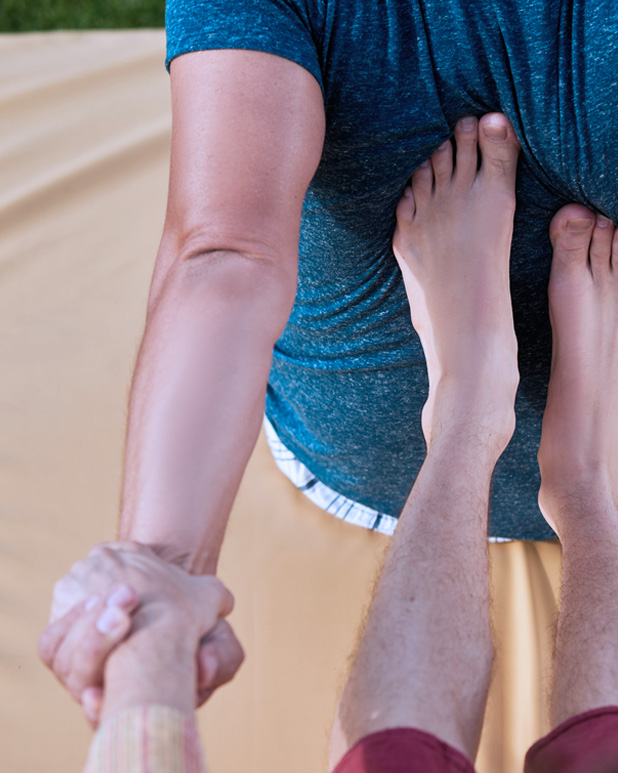Find a therapist
The Network of professional massage therapists of Quebec brings together more than 8,000 massage therapists
Member and insurer access
Find a therapist
The Network of professional massage therapists of Quebec brings together more than 8,000 massage therapists
Thai massage is a unique massage therapy technique that is rather specific and largely inspired by yoga and meditation. It consists in a succession of pressures and passive stretching, rubbing and joint movement, in which breathing occupies a major role.
Thai massage is traditionally practiced on a firm mattress directly on the ground. Stretches are executed in tandem with the therapist much like a dance, with the exception that movements are controlled by the therapist and the client is completely passive. In this massage technique, pressure is applied to precise points on the body using the palms and thumbs. The therapist can also use his arms, forearms, elbows and feet. Through its pressure along energy lines, the 10 Sen lines, Thai massage favours the client’s wellbeing and frees his emotional tensions.
The technique was born in India and has existed for more than 3,000 years. However, it was in Thailand that it was popularized. It only arrived in Quebec in the 1990s, and is still not frequently practiced by therapists here. It is also called Thai massage. However, it should not be confused with the Thai massage with boxes of herbs that is practiced on a table.
Thai massage is primarily intended to allow clients to regain energy and have a sense of lightness and space in their body. Muscle work and stretching carried out improve joint flexibility, which naturally tends to diminish with age.

Practiced regularly, Thai massage brings benefits in terms of posture and quality of life by favouring comfort with the body and movements. Thai massage, with its poses and stretching, also relieves muscle tensions, backaches, stimulates blood and lymphatic circulation. Lastly, it reduces the effects of stress on the body by providing a state of wellbeing.
Clients receiving a Thai massage are invited to wear loose, comfortable clothing; the massage will be given without oil over top of those clothes. Each part of the body will be addressed through stretching, rubbing and pressure (with thumbs, palms, elbows, knees and feet). Lying on a mattress on the ground, clients are guided by their therapist to complete movements. The therapist can use cushions to comfort the client’s body. Each of the poses is imagined and selected to have the client feel “openness” in his body, meaning an increase in mobility and flexibility in his joints. The completely passive state of the client then provides him with extremely deep relaxation.
Clients suffering from fever, circulatory or cardiac problems, open sores or infections, joint inflammation or bone diseases should avoid receiving Thai massage.
Find a specialist